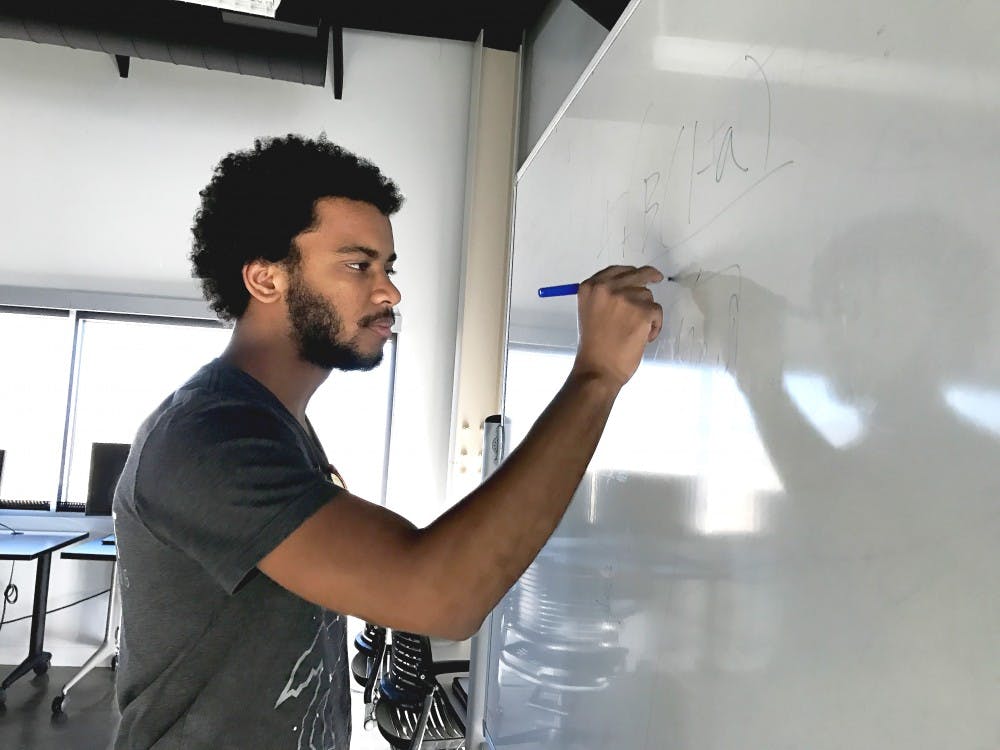From daily newscasts to sci-fi films, green screens can be seen — or perhaps more accurately, not seen — in many forms of media.
A green screen is a special effects tool that helps combine multiple visuals into a single image. The technical term for this process is compositing, and it all starts with an equation: A + B (1-a).
“A” represents the foreground plate, which is the image that one wants to keep. “B” represents the background plate, which is simply the background to be added. To keep the desired parts from “B,” it must be multiplied by the inverse alpha, represented by “A.”
“It isn’t the math part that’s hard, it’s the problem solving that’s hard,” said Paris Premdas, a senior interdisciplinary film and digital media major.
Premdas said the simplest way to describe the process is that it’s just like cutting a hole in the background to make room for the foreground image, except that it’s a little more complicated than cutting, copying and pasting.
“I would say that it’s hard since no two shots are the same,” he said. “There’s always a problem you have to solve. Hair is a fine detail that you have to have perfectly outlined in compositing to properly put over the background.”
Premdas is a visual effects student concentrating on animation lighting and compositing. He also works as a teaching assistant for UNM’s compositing class, a job he has held since he was a sophomore.
“It just feels unreal that that’s an actual job that people actually get paid for,” Premdas said, describing the job as difficult but also very rewarding and fun.
Just like other artists, Premdas looks at others’ work for inspiration. Although there are several movies he enjoys, he says the latest chapter in the “Star Wars” saga — “The Force Awakens” — is one of the most recent films he admires.
“Their set extensions and CGI characters are merged perfectly together by Industrial Light and Magic, and it is a film I always return to for study,” he said.
Stunningly realistic visual effects might be flooding theater screens today, but compositing has actually been around for much longer.
Georges Méliès, a French illusionist and film director in the late 19th century, showed one of the earliest examples of this visual trick in his 1898 movie “Un Homme De Tête.”
Get content from The Daily Lobo delivered to your inbox
The process wasn’t quite the same as green screening, but Méliès achieved double exposure by blacking out specific areas of the film with pieces of glass painted black. That technique is called matte painting, and it is one of the oldest in the history of visual effects.
Thanks to contemporary technology, the process is much simpler and the possibilities for filmmakers are seemingly endless. It is part of what drives new visual effects artists to achieve new heights.
“There are new tools built each year that make what was not possible 15 years ago possible today,” Premdas said. “I chose VFX because it’s how I can directly inspire another generation to love and want to make movies.”
Isabel Gonzalez is a sports reporter for the Daily Lobo. She mainly covers men’s soccer and basketball. She can be reached at sports @dailylobo.com or on Twitter @cisabelg.






